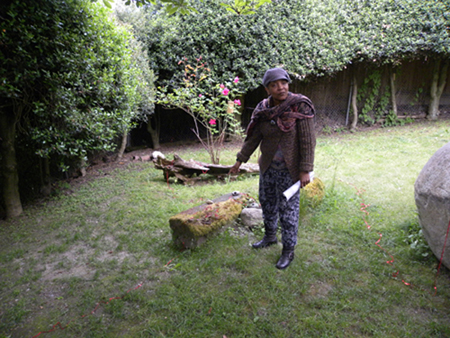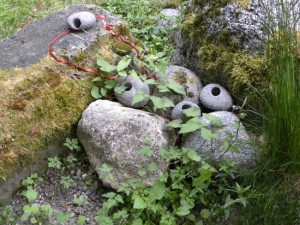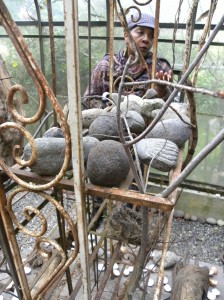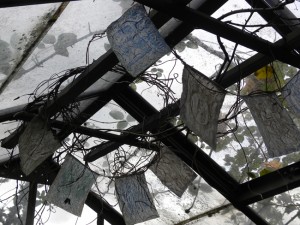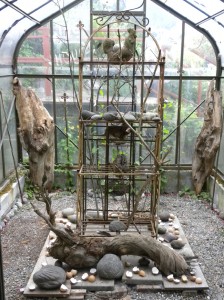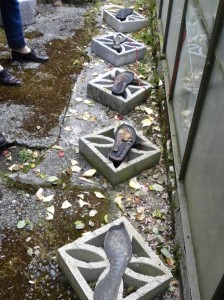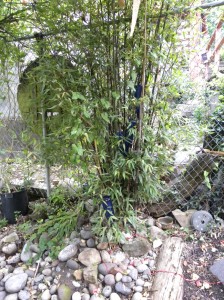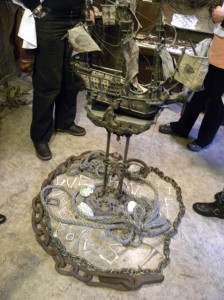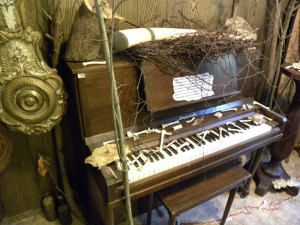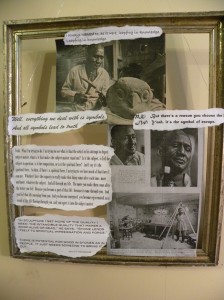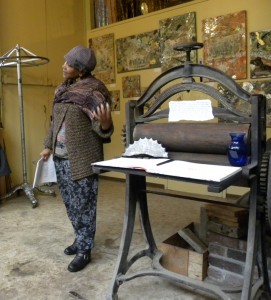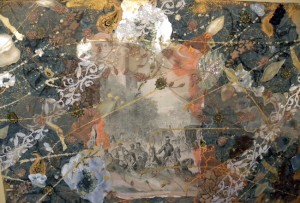Carletta Carrington Wilson’s “Poem of Stone and Bone”
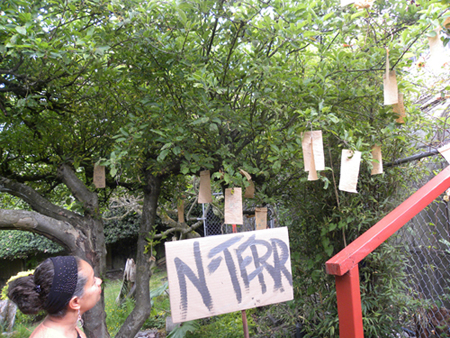
Entrance to the Installation and the Conclusion of the experience with prayers hung on tree by participants
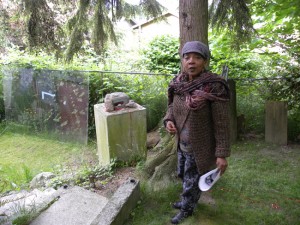
Carletta Carrington Wilson at the beginning of her tour of her installation at the James Washington House at the place where Washington received his stones
Carletta Carrington Wilson’s installation at theJames Washington House in Seattle, in May was provocative and moving. Carrington is a poet, a visual artist, a librarian, an African American, an historian, a writer, and a spiritual person who deeply connected to the spirit of the James Washington House.
“Poem of Stone and Bone” was installed in the garden, the greenhouse, the house, and the studio. In her tour of the installation, Carrington elaborated on the meaning of the various subtle interventions that she created in these places.
First there was the red Bloodline of Time passing through the garden stones and stumps, leading through the garden and into the studio
Then there was the greenhouse turned spirit house, The House Stands Firm, filled with installations of wood and stone.
On the ceiling were rubbings of 19th century embossed books from some of the many books in the library at the Foundation.
In The House Stands Firm were stones and wood found on the property, some of them had been partially worked by Mr. Washington. The egg shells refer to two primary images in James Washington’s art, the bird and the egg.
Next there were soles/souls, a reference to both Washington’s metier as a shoemaker for many years, as well as his spiritual commitment to life beyond the physical world. In his earliest years, his mother apprenticed him to a shoemaker, work at which he immediately excelled and which in some ways forecast his work as a sculptor. because he went on to specialize in orthopedic shoes.
A blue bottle in a tree, referring to the blues, and also warding off evil spirits, was barely visible as we left the garden to go into the studio.
Inside the studio, the model of a slave ship that Washington had collected was given a central position, along with the slave chains that surrounded it – these were key catalysts at the house for the artist long before she began her residency.
The ship, a 15th century Spanish galleon is, according to the artist, ” the key element highlighting the tremendous changes wrought on humans, animals and nature stemming from the West African trade in slaves.”
The artist also enhanced pieces of furniture like the piano with an installation of stones, or bones.
On the way to the lower studio were photographs of Washington with quotes from his autobiography
Carrington recited her poem consisting entirely of the titles of James Washington’s books in his library
Finally, there were her collages based on Frank Leslie’s Illustrated Weekly‘s images of various scenes of the Civil War combined with subtle fabrics.
Here is an example including an image set in the principal square of Savannah, Georgia a year before the Emancipation Proclamation on January 1, 1863
Carletta Carrington Wilson deeply explored Washington’s books, his stones, his garden, his home, his studio, and enriched our experience of all of these dimensions of both his life and his legacy. Yet, she was also absolutely herself as she explored, adding her own responses and feelings, her own aesthetic sensibilities with color, shape, words, and objects. We were left with a sense of drifting back and forth in time from the Civil War to the present, from Emancipation to our current world. Carletta Carrington Wilson gave us continuity with the past and a step into the future. Her installation also gave us a sense of peacefulness and hope, at a time when they are sorely needed.
This entry was posted on August 2, 2011 and is filed under Carletta Carrington Wilson.

